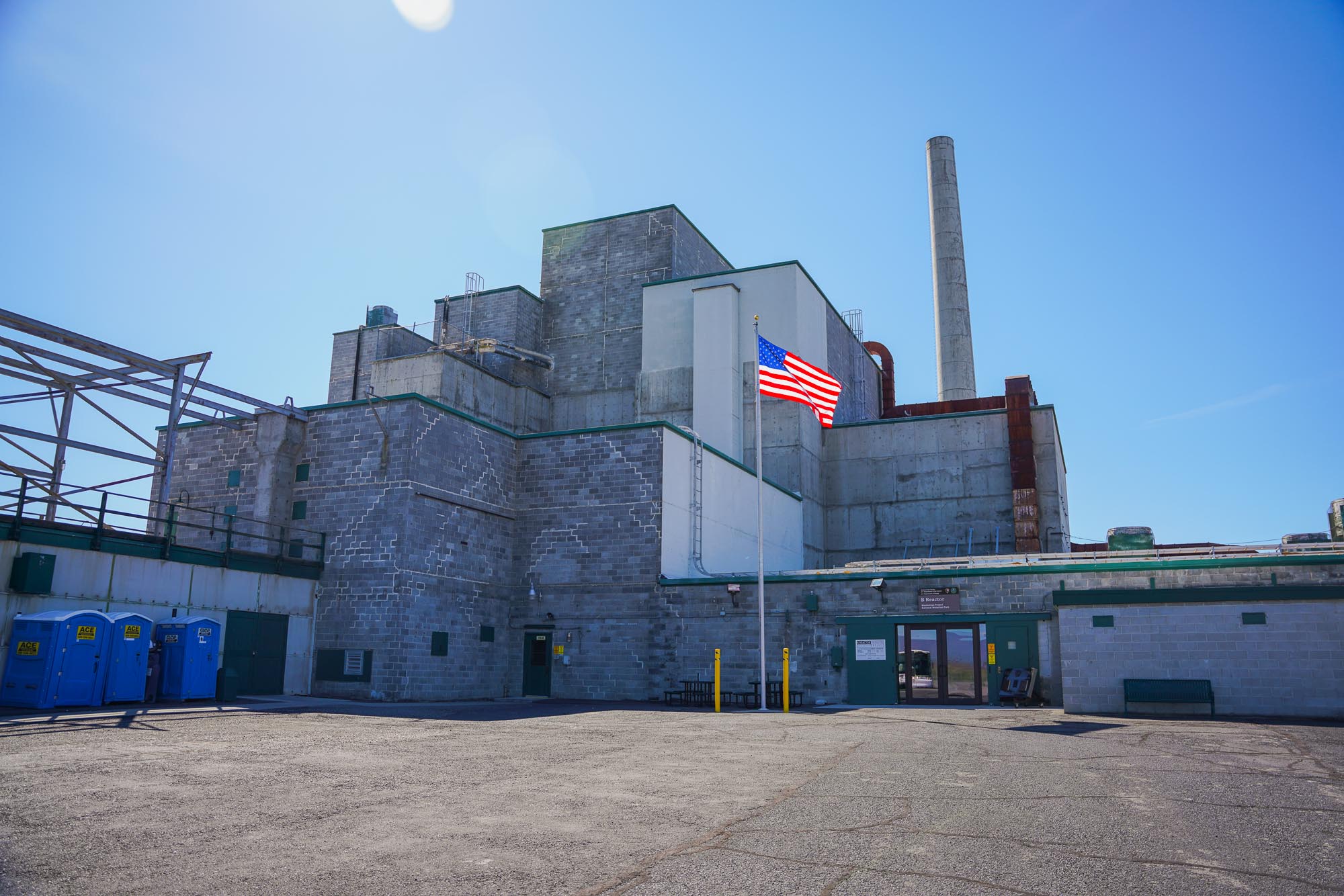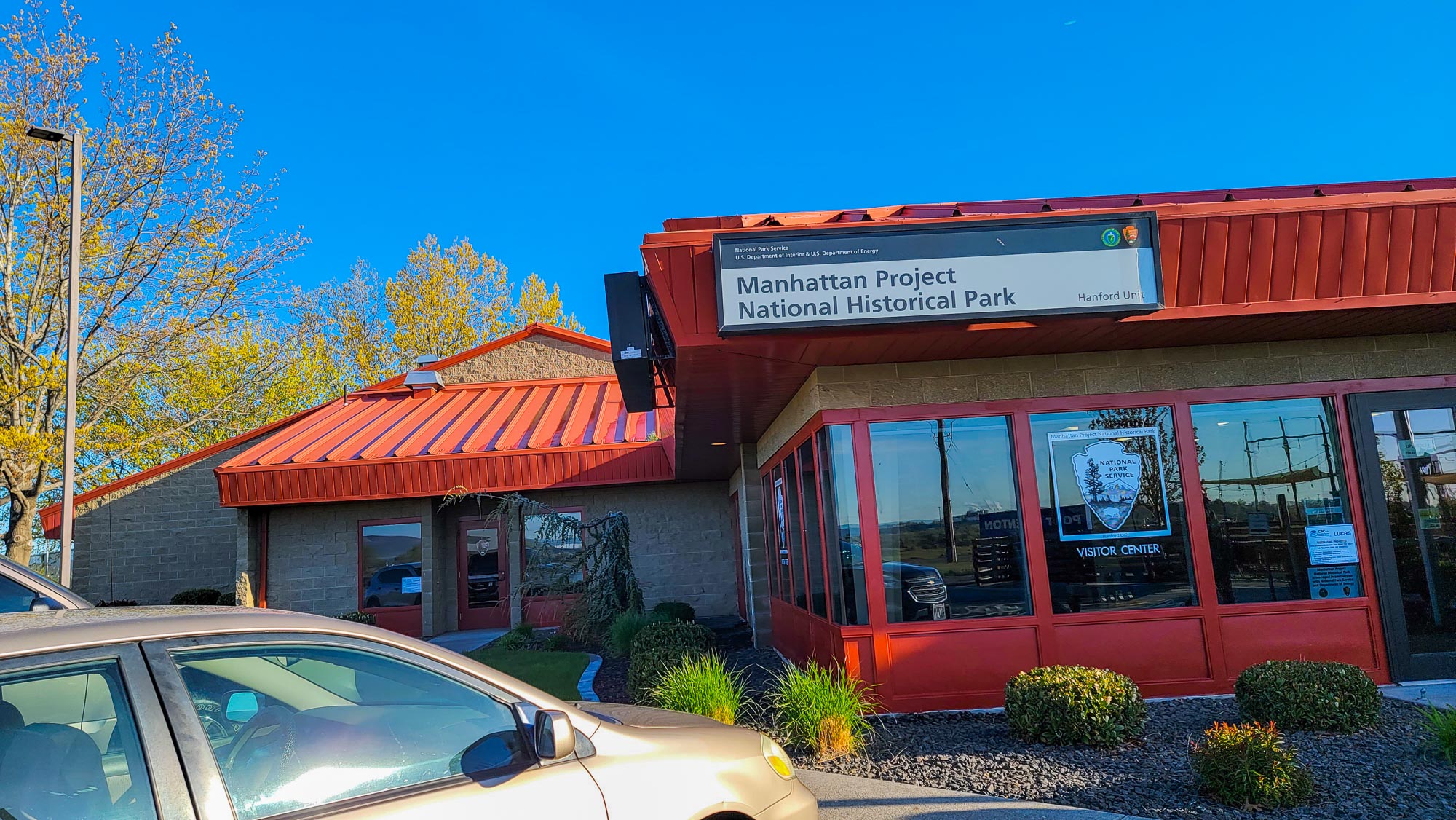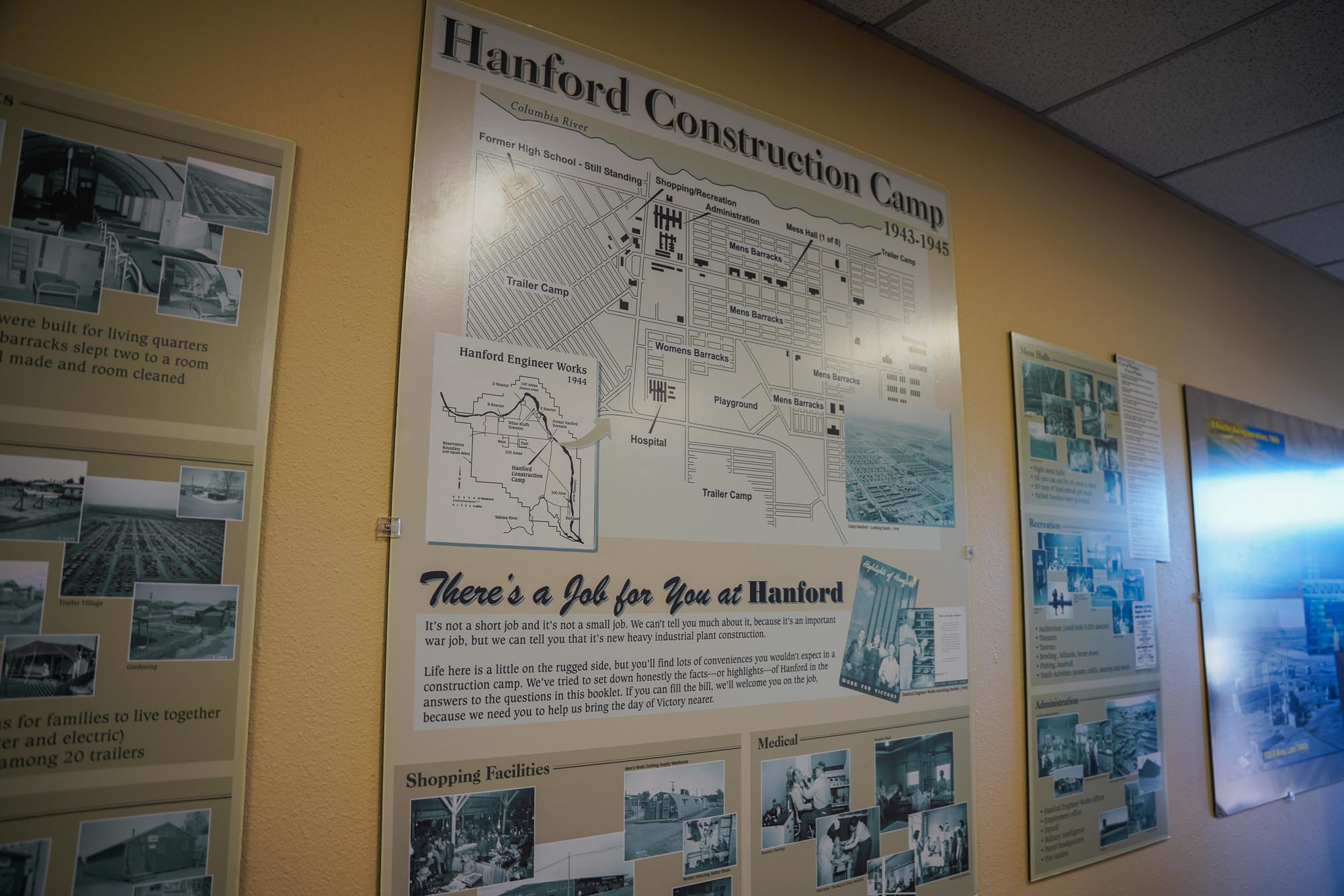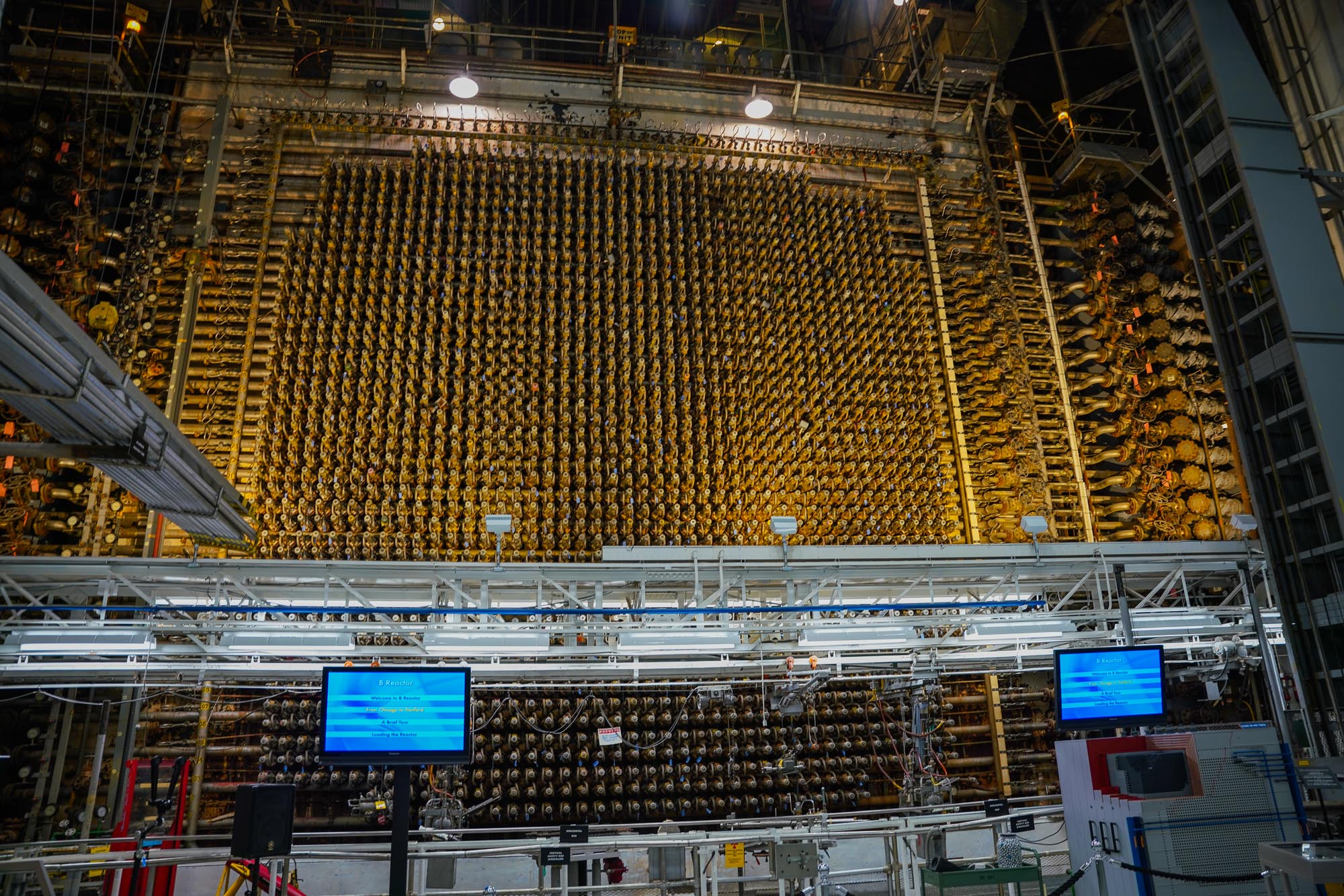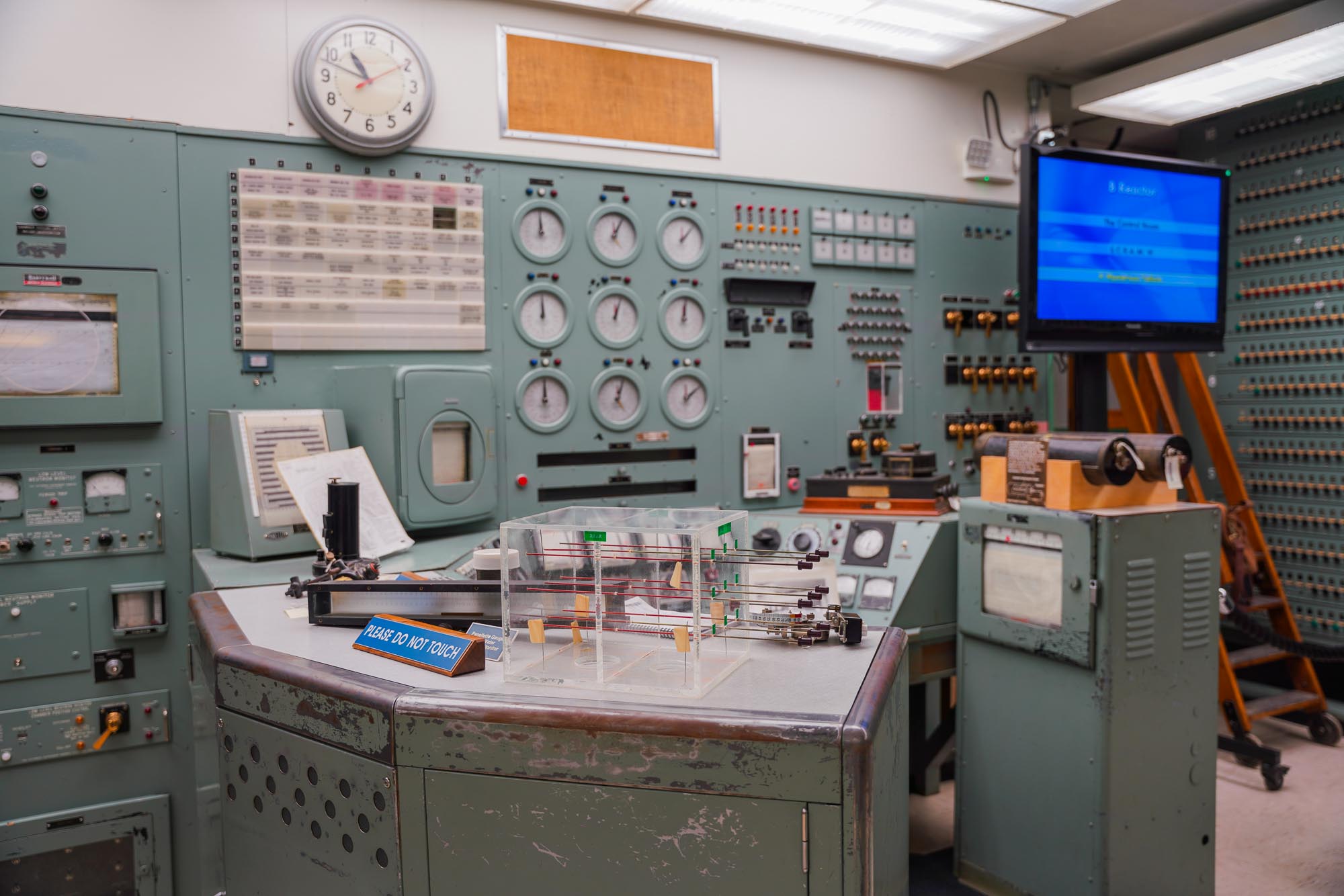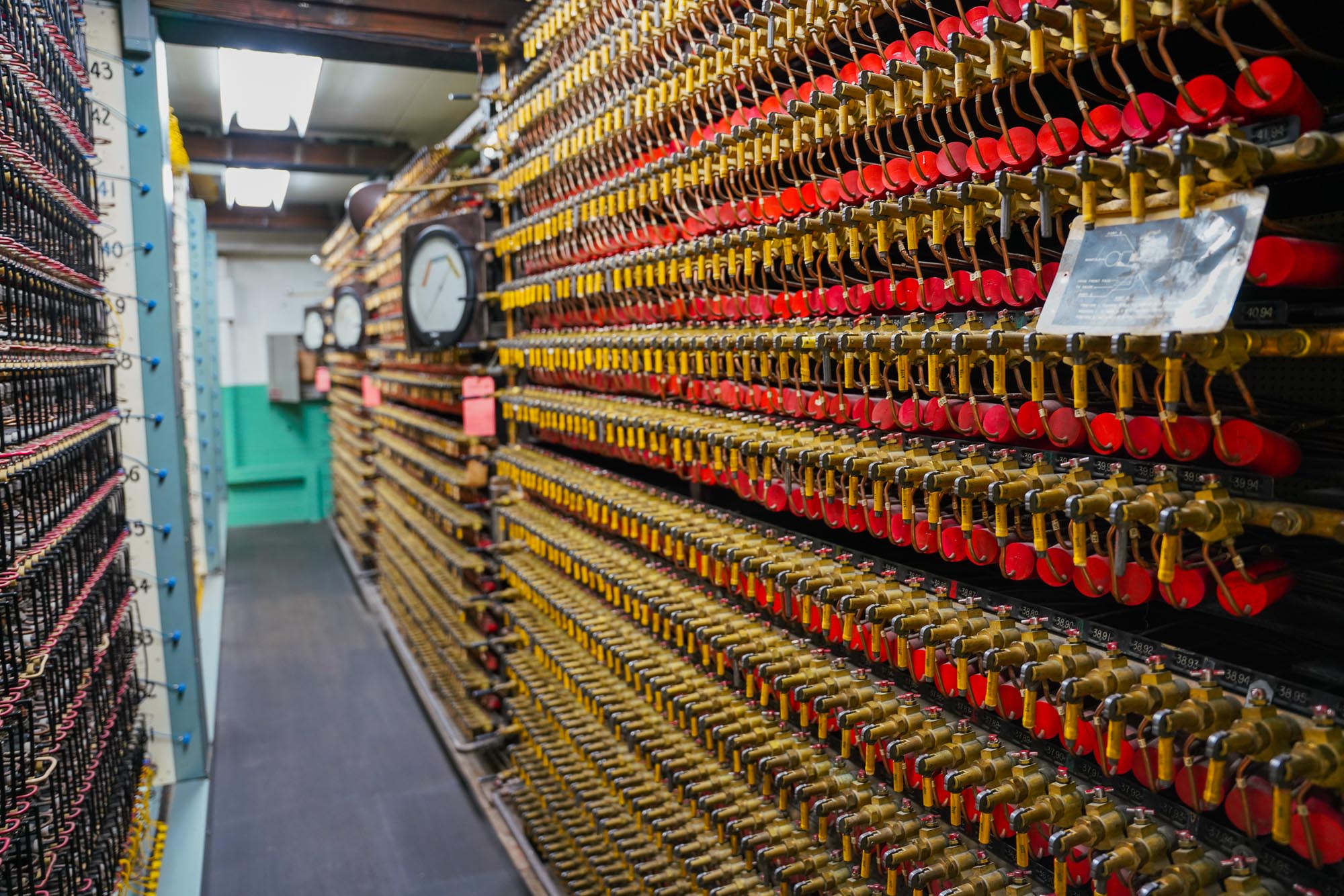Published by Jeremy. Last Updated on July 21, 2022.
Disclaimers: We were hosted for this experience. Our site uses demographic data, email opt-ins, display advertising, and affiliate links. Please check out our Terms and Conditions for more information. Listed prices and attraction details may have changed since our visit and initial publication.
Odds are good you know a bit about the development of the nuclear bomb that ended the Pacific campaign of WWII.
If you haven’t gone deep into the history, discussions are often relegated to the Manhattan Project’s work in Los Alamos where the bombs were built and tested. But did you know the nuclear materials used in said bombs were not created in Los Alamos but instead were split between two other sites in the USA (for safety and security purposes)?
The plutonium enrichment was actually achieved at a reactor outside of the Tri-Cities in Washington state, and the Hanford B Reactor is now a National Historic Site that is open for tours in partnership with the Department of Energy!
I was fortunate enough to attend a media visit to this one and have to admit, it is a pretty amazing tour all around.
A Quick Background on Plutonium Enrichment in WWII
While the entire history of The Manhattan Project is fascinating in its own right, the development of plutonium enrichment within the program is among the most interesting.
Italian physicist Enrico Fermi was one of the main researchers behind the process. In 1939, he conducted the first fission experiment in the United States and shortly thereafter warned the military about the potentially destructive nature of nuclear energy if in the wrong hands (particularly Nazi Germany).
By the time the USA joined the war effort in 1941, the government more or less greenlit whatever was necessary to further conduct plutonium enrichment research. While on the tour I made the joke that the government wrote a blank check and removed all roadblocks to make this one work, and it isn’t too far off.
In 1943, the government broke ground at the Hanford site in Washington (for the B Reactor plus eight more), and just 11 months later the first large scale nuclear reaction took place at B Reactor.
Yes, researchers went from theoretical test reactions to a full-scale reactor in about five years. Then, just nine months later, the first nuclear bomb was tested in Los Alamos at the Trinity Test Site, and one month after that a bomb was dropped on Nagasaki, Japan.
If you’re like me, the realization that nuclear technology went from theoretical bench-scale tests to a fully working bomb that helped end a World War in just six years is pretty surreal.
So, how did they accomplish this huge leap in technology in such a short timeframe? You find out on the Hanford B Reactor tour!
What You See and Learn on the B Reactor Tour
The tour of the B Reactor begins at the DOE visitor center near the Tri-Cities. A docent greets you and lets you read up on the history of the project before giving a quick summary of what you are about to experience (plus a long, long list of rules and regulations- cameras are great, treat everything else like you’re going through airport security).
Then you hop on a bus to be taken out to the reactor.
As the outskirts of the Tri-Cities are barren (it is more or less a desert), you’ll quickly realize that you cannot see any reactors nearby. Not one and certainly not the nine that were constructed.
To reach the B Reactor, you have to go on a drive. After about 45 minutes driving into the middle of nothing, your docent will narrate a bit more about the landscape and why the site is so remote. (Yes, it was safety concerns for untested nuclear technology. But it is also fascinating to find out that the government more or less evicted everyone within a several hundred square mile area, too.)
When you arrive, another docent greets you in the main reactor chamber to share the history of how the facility was built and a very introductory level explanation of how fission works. It is one thing to be told how this technology works outright (which I’ll save you the full details of here), but it is another thing to learn about it when you are standing just 20 feet away from the monster reactor itself.
Then you are told that the entire process went off almost entirely as predicted from start to finish. The only hiccups they had in the reactions were also predicted, which is a true testament to how intelligent these scientists were.
The cool part here is after the initial lecture you’re allowed to walk through many of the rooms like the offices, control center, and more to learn via posted signs, more docent-led discussions, and to see the facility up close and personal.
In a way, this one is a museum through and through. Just a very secure museum dedicated to one of the most incredible developments in modern history.
I won’t spoil all the rooms, but my favorite was the control room. Here you see the thousands of knobs, chart readers, and buzzers that scientists had to monitor 24/7 and get to learn about some cool control systems used to maintain the fission reaction.
The docent narration here really tied the tour together and left our entire group in awe. How this process came together so quickly, in the 1940s, on that era’s technology, without a major accident (that we are allowed to know of at least) is a true testament to modern science. Although I am a chemical engineer with a very loose knowledge of theoretical nuclear physics, I learned more in this one tour than I ever have in the past.
Whether you have a positive or negative opinion on nuclear weaponry and technology at large is one thing, but most cannot argue that the bomb ended WWII faster than it otherwise would’ve and changed the world as we know it.
If you find this history as fascinating as I do, this is truly a must-see attraction when in the Tri-Cities region of Washington.
The Hanford B Reactor Tours start at the visitor center at 2000 Logston Blvd in Richland, WA and as of my visit in 2022 was free of charge. Tours are conducted seasonally.
About Jeremy
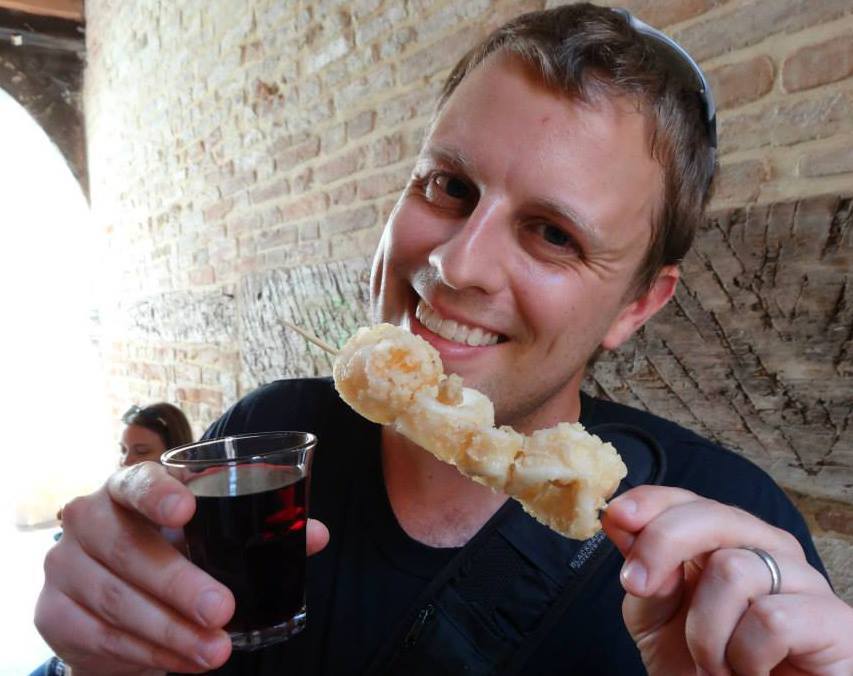
About the Author: Jeremy is a full-time travel writer based in Pittsburgh and primary author of this site. He has been to 70+ countries on five continents and seeks out new food, adventure activities, and off-the-beaten-path experiences wherever he travels.
